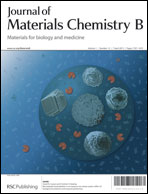Based on the adsorption of a metal–organic framework (MOF) to DNA, a fluorescent biosensor for H5N1 antibodies has been developed. In this system, a short oligonucleotide was modified with the fluorescent dye 5′6-FAM (5′6-carboxyfluorescein) as the fluorescent DNA probe. With the introduction of a MOF aqueous solution, the DNA probe can be adsorbed by the MOF and the fluorescence of the dye will be quenched by the MOF. Subsequently, exonuclease I (Exo I) is employed to specifically hydrolyze the DNA probe at the 3′-terminus and the fluorescent dye FAM is released from the MOF, which results in recovery of the fluorescence. If the 3′-ends of the DNA probe are linked to H5N1 antigens, which can specifically recognize the H5N1 antibody, the hydrolysis of Exo I would be inhibited, so the fluorescence of the system would not recover. The fluorescence is related to the logarithm of the H5N1 antibody concentration in the range 1.0 × 10−6–5.0 × 10−9 mol L−1 with a detection limit of 1.6 × 10−9 mol L−1 (S/N = 3). The proposed method has been applied to detect the H5N1 antibody in serum samples with satisfactory results.

You have access to this article
 Please wait while we load your content...
Something went wrong. Try again?
Please wait while we load your content...
Something went wrong. Try again?


 Please wait while we load your content...
Please wait while we load your content...